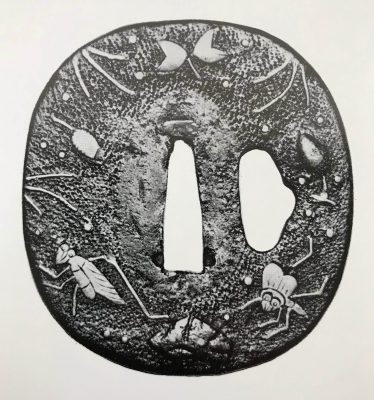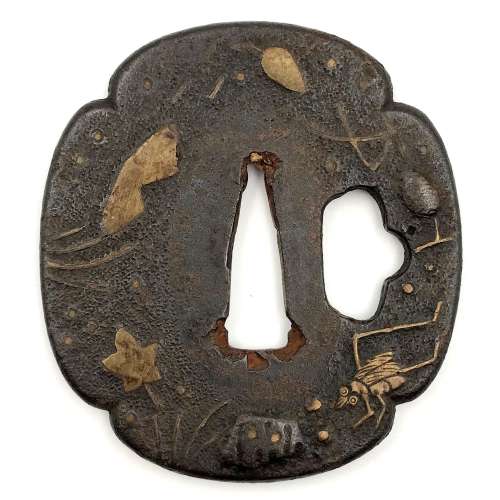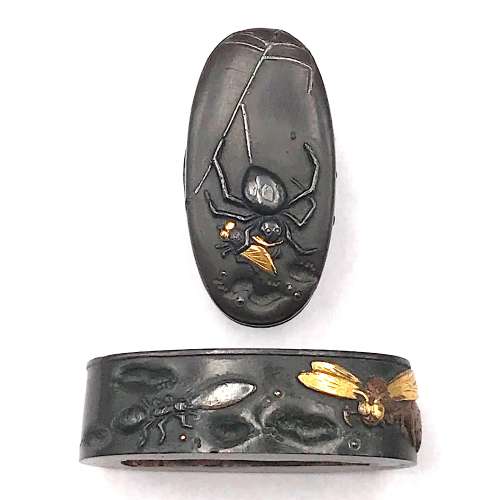
Tsuba Kanshoki, 1975, p. 61: Heianjō tsuba, Momoyama Period.


Tsuba Kanshoki, 1975, p. 61: Heianjō tsuba, Momoyama Period.

Fuchi-kashira made of Shibuichi carved and inlaid with shakudō, gold, silver, and copper with the design of spider holding a fly on the fuchi, and other insects (ant-lion, wasp, and ant) on the kashira.
Fuchi: 35.1 mm. Kashira: 38.7 mm. Main material: Shibuichi. Other metals: shakudō, gold, silver, and copper. Decorative technique: iroe taka-zōgan.